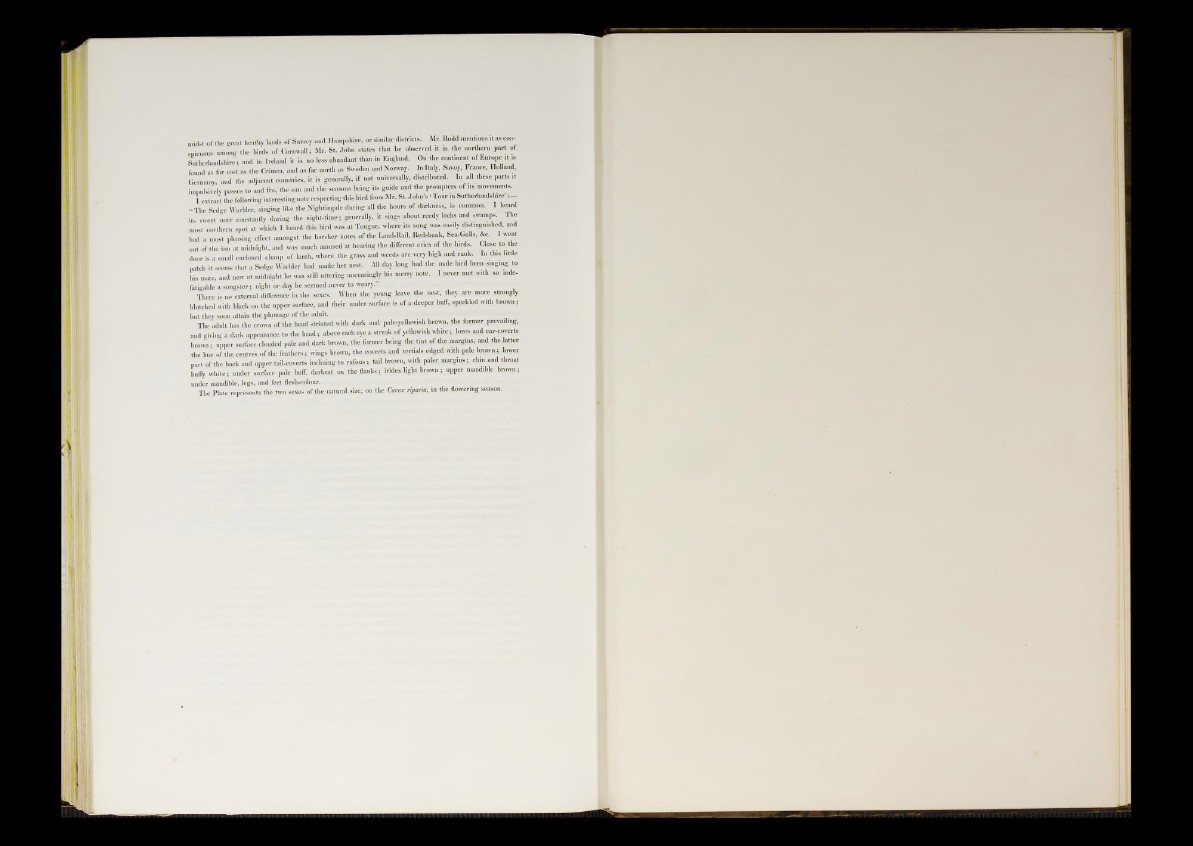
midst of the great heathy lands of Surrey and Hampshire, or similar districts.. Mr. Hodd mentions it as con-
snicuous among the birds of Cornwall; Mr. St. John states that he observed it in the northern part of
Sutherlandshire; and in Ireland it is no less abundant than in England. On the continent of Europe it is
found as far east as the Crimea, and as far north as Sweden and Norway. In Italy, Savoy, France, Holland,
Germany and the adjacent countries, it is generally, if not universally, distributed. In all these parts it
impulsively passes to and fro, the sun and the seasons being its guide and the prompters of its movements.
I extract the following interesting note respecting this bird from Mr. St. John's ■ Tour in Sutherlandshire'
I The Sedge Warbler singing like the Nightingale during all the hours of darkness, is common. I heard
its sweet note constantly during the night-time; generally, it sings about reedy lochs and swamps. The
most northern spot at which I heard this bird was at Tongue, where its song was easily distinguished, and
had a most pleasing effect amongst the harsher notes of the Land-Rail, Bedshank, Sea-Gulls, &c. I went
out of the inn at midnight, and was much amused at hearing the different cries of the birds. Close to the
door is a small enclosed clump of larch, where the grass and weeds are very high and rank. In this little
patch it seems that a Sedge Warbler had made her nest. All day long had the male bird been singing to
his mate, and now at midnight he was still uttering unceasingly his merry note. I never met with so mde-
fatigable a songster; night or day he seemed never to weary.”
There is no external difference in the sexes. When the young leave the nest, they are more strongly
blotched with black on the upper surface, and their under surface is of a deeper buff, speckled with brown;
but they soou attain the plumage of the adult.
The adult has the crown of the head striated with dark and pale-yellowish brown, the former prevading,
and giving a dark appearance to the h ead; above each eye a streak of yellowish white; lores and ear-coverts
brown • upper surface clouded pale and dark brown, the former being the tint of the margins, and the latter
the hue of the centres of the feathers; wings brown, the coverts and tertials edged with pale brown; lower
part of the back and upper tail-coverts inclining to rufous; tail brown, with paler margins; chin and throat
huffy white; under surface pale buff, darkest on the flanks; irides light brown; upper mandible brown;
under mandible, legs, and feet flesh-colour.
The Plate represents the two sexes of the natural size, on the Carex riparia, in the flowering season.